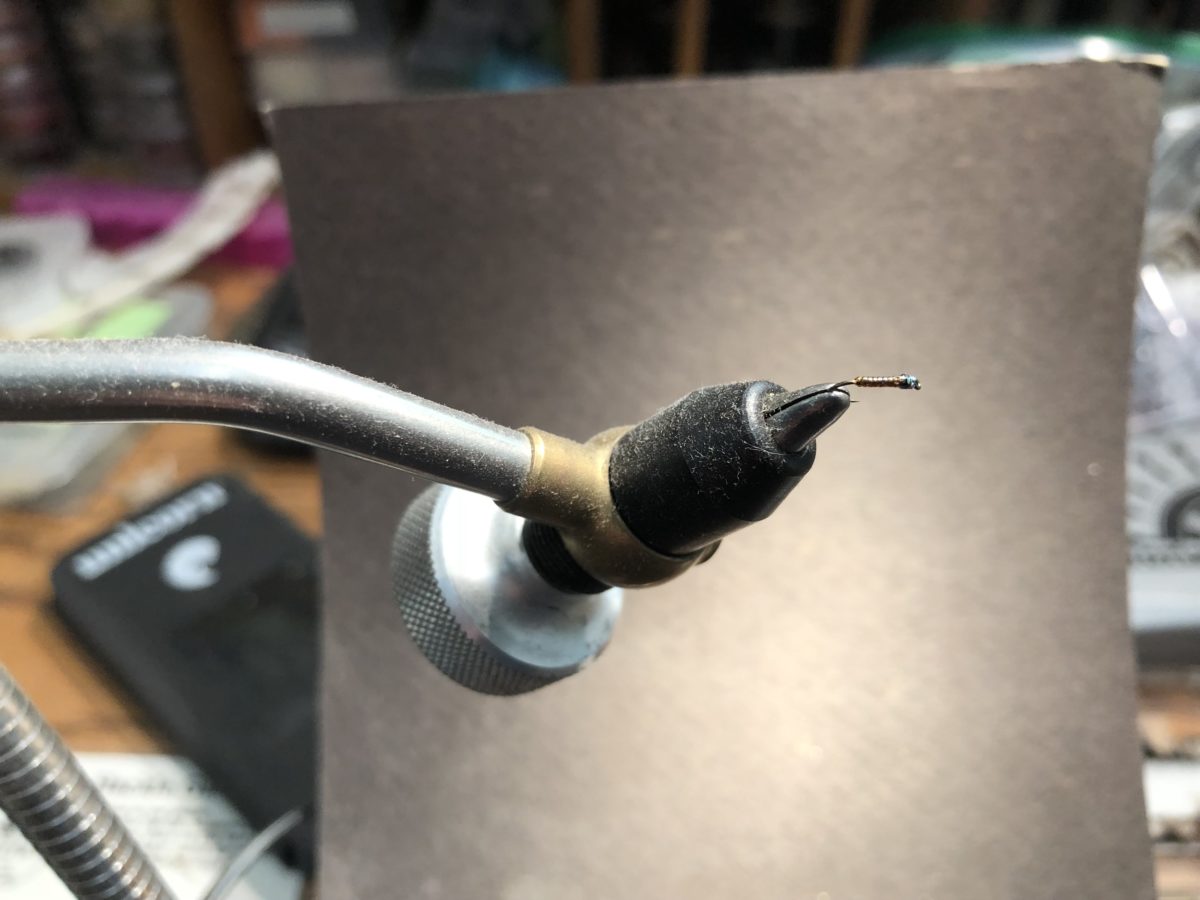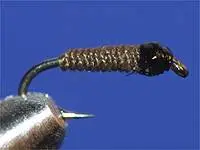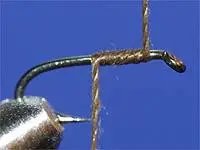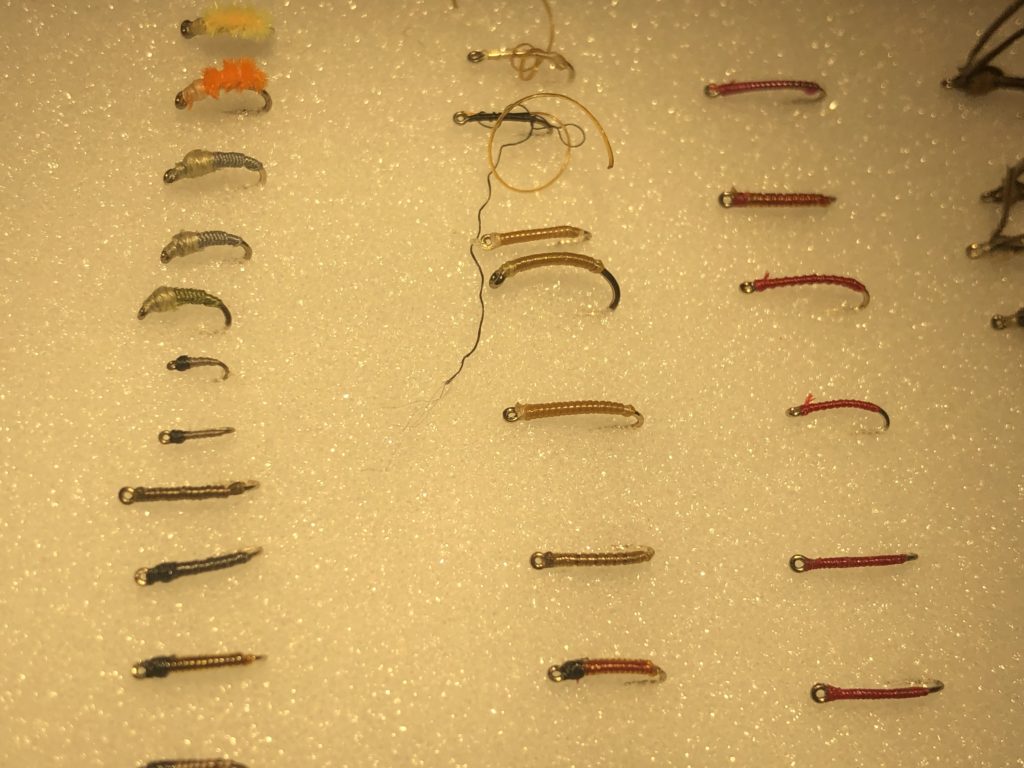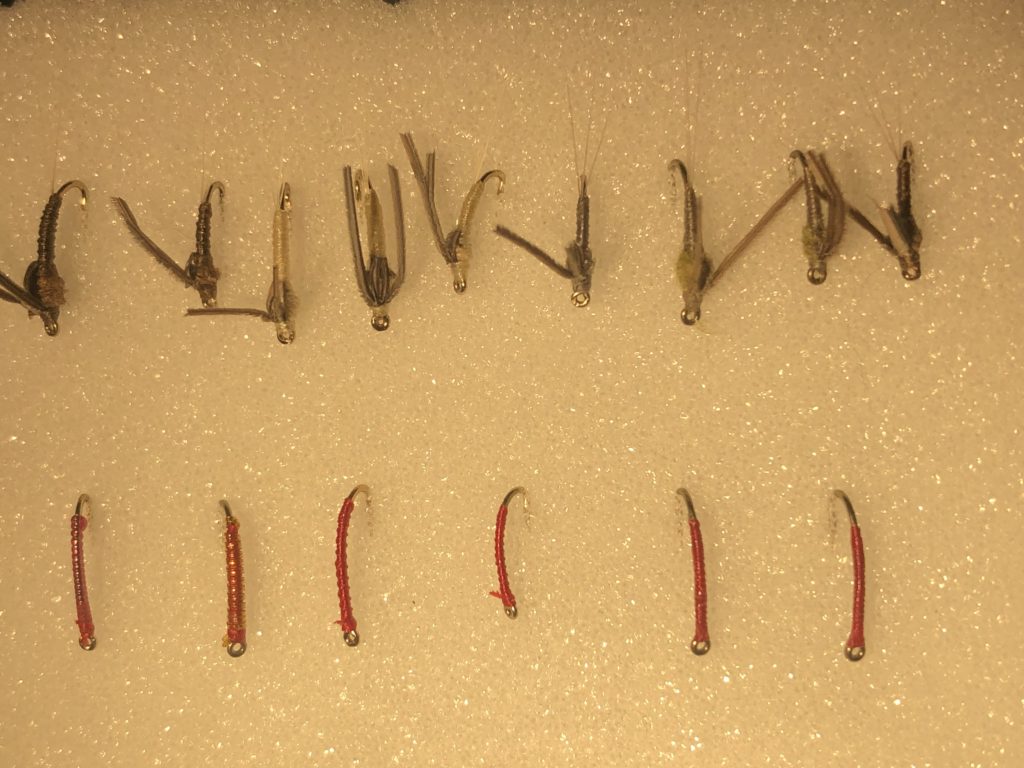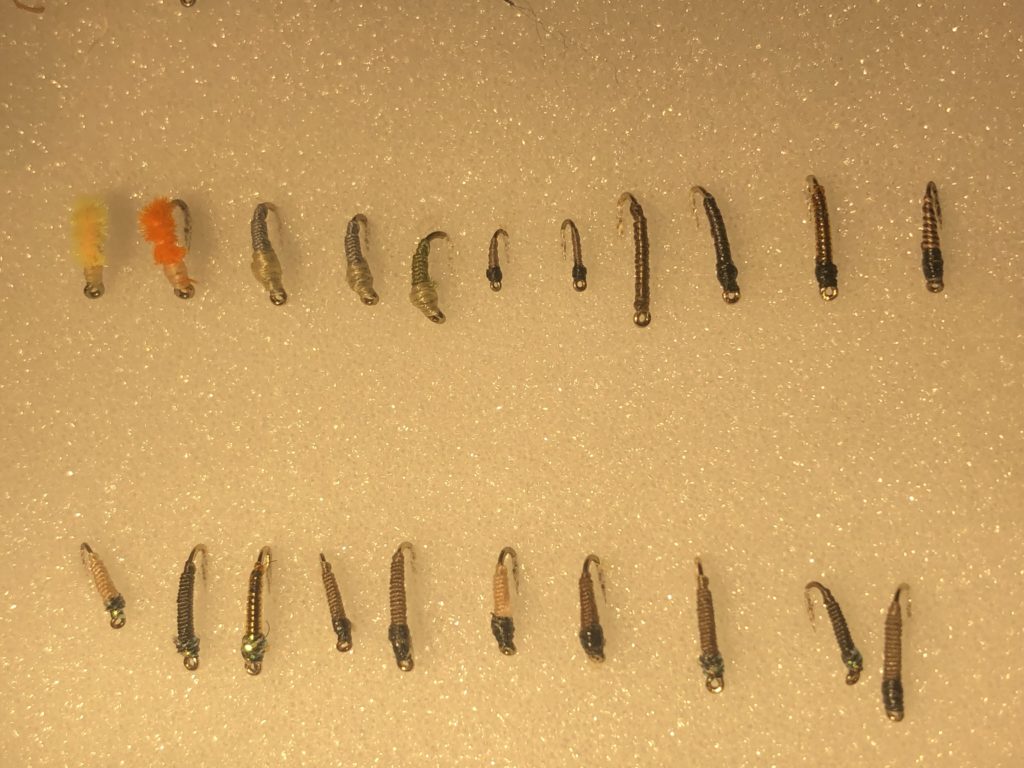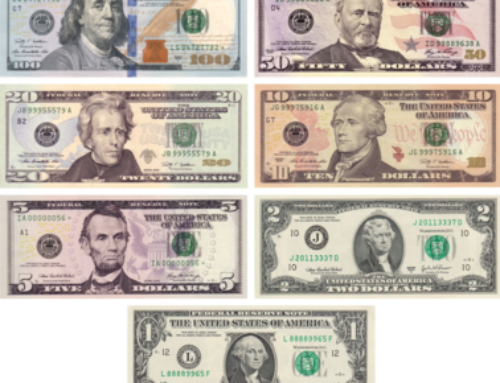Andy Kim is a legendary guide on the San Juan River for the past 20 years, after having fished extensively in Colorado and Utah. His 13 fly patterns are relatively simple impressionistic flies, yet they are the most deadly effective that I have ever come across in having fished with lots of guides and well-known anglers. The key, as he has told me several times, to his often imitated but never duplicated thread bodied nymph is “in the exact right shape and thickness, with a reasonably close color, not the exact material.” The quest for his Yong Special tying thread, believing that is the secret to his fish catching success has become a hobby within a hobby to many. The truth is he has used a lot of materials over the years, but he is very meticulous about following the exact method of tying, as any deformity in the shape or abnormal tapering, etc., will effect the effectiveness of his simple midge patterns described in this Fly Fisherman Magazine article from 2001. Further, he is a master at presentation of the fly, using many different techniques. He teaches all of this to his clients so hiring him for a day is the key to starting to learn how the hell he catches so many fish. I have been hiring him for 20 years and took his three day one-on-one school, and I’ve just begun to scratch the surface, as he spends so much time on the water, that his methods and flies continue to adapt and improve with time.
The name of the game on the San Juan River, where Andy guides, is to fish midge imitations (tiny ones). The San Juan River is filled with midge pupae and larvae, which account for up to 95% of the trout’s appetite. Midge imitations will put you on the trout year round (hence the size 22-26 brown and cream Yong Specials which are my favorite flies for this river), though there are certainly other patterns, such as small worms, micro sized scuds, and all of Andy’s other impressionistic mayfly nymph, dry midge, dry mayfly, dry terrestrial and streamer flies which will keep you on fish, no matter the season or hatch.
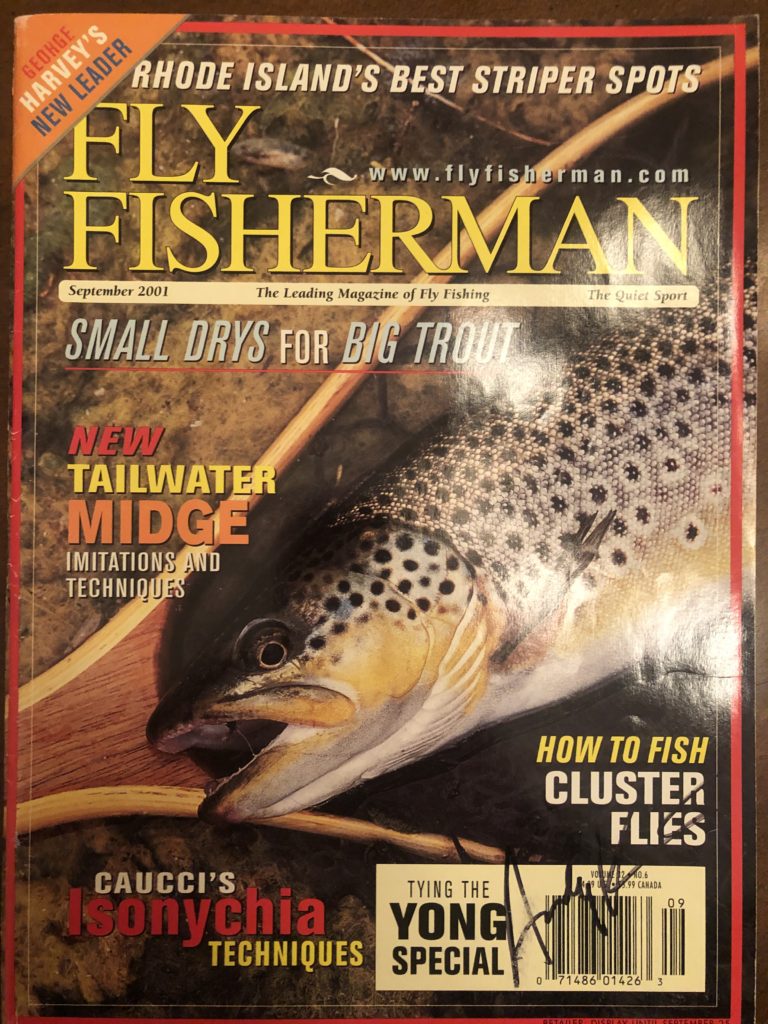
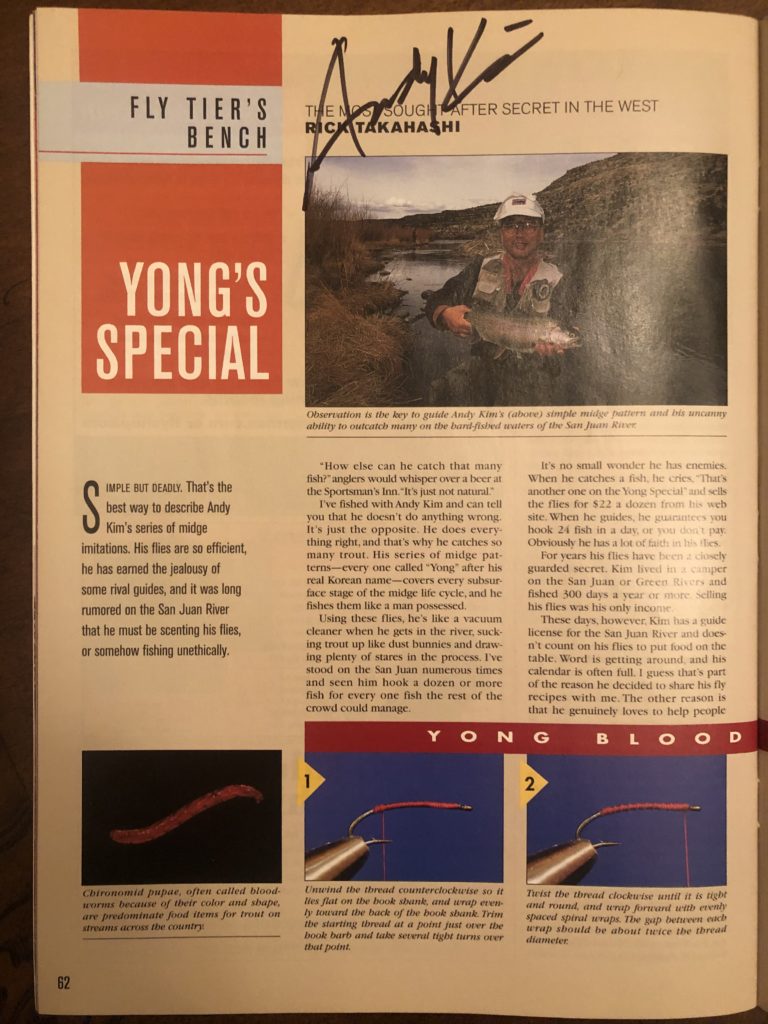
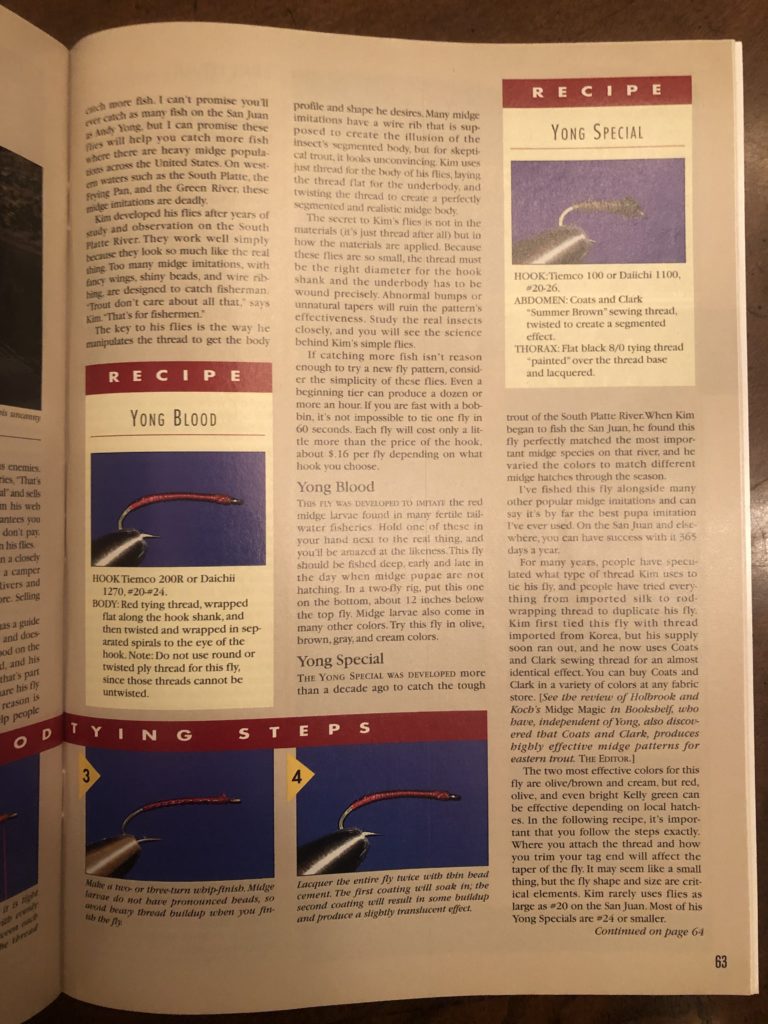
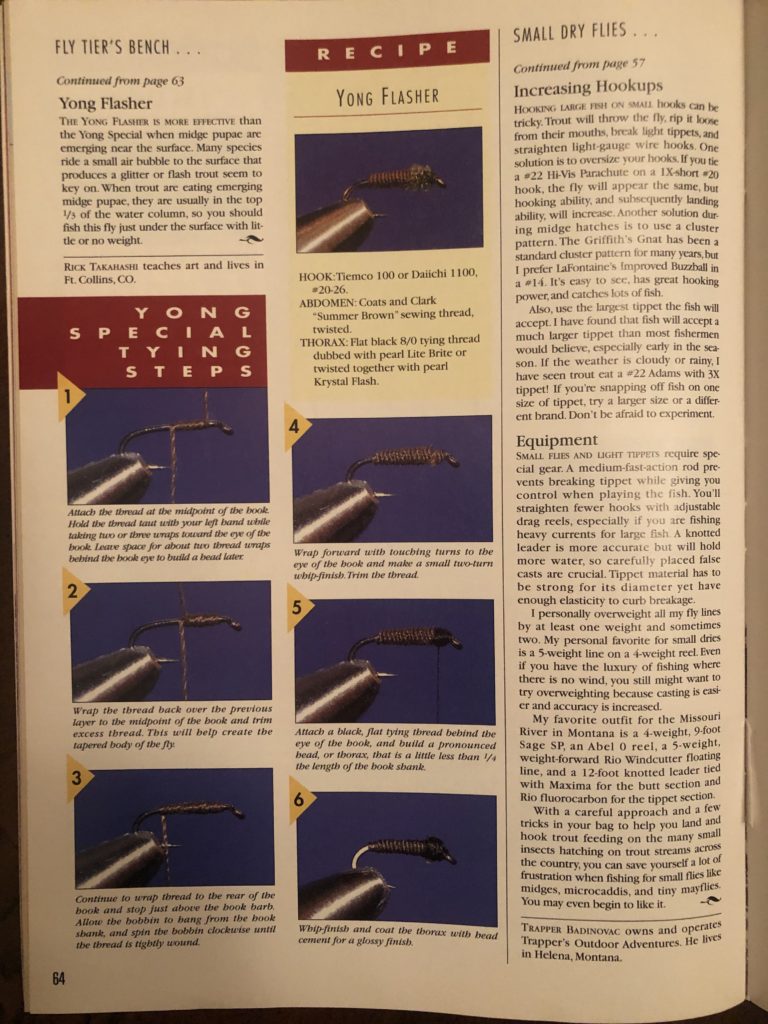
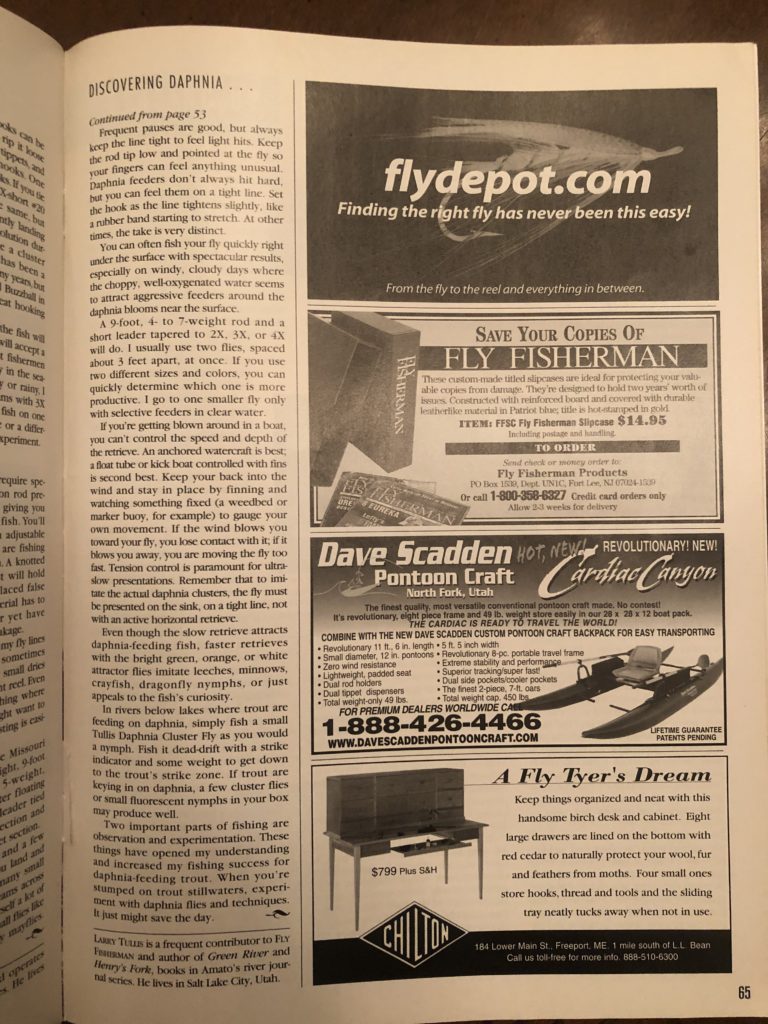
The Yong Special (A Deadly Midge Pattern) – With Tying Instructions for Yong Special, Yong Blood, and Yong Flasher
by Rick Takahashi
Simple but deadly. That’s the best way to describe Andy Kim’s series of midge imitations. His flies are so efficient, he has earned the jealousy of some rival guides, and it was long rumored on the San Juan River that he must be scenting his flies, or somehow fishing unethically. “How else can he catch that many fish?” anglers would whisper over a beer at the Sportsman’s Inn. “It’s just not natural.”
I’ve fished with Andy Kim, and can tell you that he doesn’t do anything wrong. It’s just the opposite. He does everything right, and that’s why he catches so many trout. His series of midge patterns-every one called “Yong” after his real Korean name–covers every subsurface stage of the midge life cycle, and he fishes them like a man possessed.
Using these flies, he’s like a vacuum cleaner when he gets in the river, sucking trout up like dust bunnies, and drawing plenty of stares in the process. I’ve stood on the San Juan numerous times, and seen him hook a dozen or more fish for every one fish the rest of the crowd could manage. It’s no small wonder he has enemies. When he catches a fish, he says out loud “that’s another one on the Yong Special” and sells the flies for $22 a dozen from his web site. When he guides, he guarantees you hook 24 fish in a day, or you don’t pay. Obviously he has a lot of faith in his flies.
For years his flies have been a closely guarded secret. Kim lived in a camper on the San Juan or Green Rivers, and fished 300 days a year or more. Selling his flies was his only income. These days, however, Kim has a guide license for the San Juan River, and doesn’t count on his amazing flies to put food on the table. Word is getting around, and his calendar is often full. I guess that’s part of the reason he decided to share his fly recipes with me. The other reason is that he genuinely loves to help people catch more fish. I can’t promise you’ll ever catch as many fish on the San Juan as Andy Yong (you’d probably need dynamite), but I can promise these flies will help you catch more fish where there are heavy midge populations. On the South Platte, the Frying Pan, and the Green River, these midge imitations are deadly.
Kim developed his flies after years of study and observation on the South Platte River. They work well simply because they look so much like the real thing. Too many midge imitations are designed to catch fisherman, with fancy wings, shiny beads, and wire ribbing. “Trout don’t care about all that,” says Kim. “That’s for fishermen.”
The key to his flies is the way he manipulates the thread to get the body profile and shape he desires. Many midge imitations have a wire rib that is supposed to create the illusion of the in- sect’s segmented body, but for skeptical trout, it looks unconvincing. Kim uses just thread for the body of his flies, laying the thread flat for the underbody, and twisting the thread to create a perfectly segmented, and realistic midge body.
The secret to Kim’s flies is not in the materials (it’s just thread after all) but in how the mate- rials are applied. Because these flies are so small, the thread must be the right diameter for the hook shank, and the underbody has to be wound precisely. Abnormal bumps or unnatural tapers will ruin the effectiveness of the pattern. Study the real insects closely, and you will see the science behind Kim’s simple flies.
If catching more fish isn’t reason enough to try a new fly pattern, consider the simplicity of these flies. Even a beginning tier can produce a dozen or more an hour. If you are fast with a bobbin, it’s not impossible to tie one fly in 60 seconds. Each fly will cost only a little more than the price of the hook, about $.16 per fly depending on what hook you choose.
Recipe:
HOOK: Tiemco 100, Daiichi 1100 #20-26.
THREAD: Coats and Clark
ABDOMEN: Twist thread to create a segmented effect.
THORAX: Flat black 8/0 tying thread,
Tying Instructions
The Yong Special was developed more than a decade ago to catch the tough trout of the South Platte River. When Andy Kim began to fish the San Juan, he found this fly perfectly matched the most important midges species on that river, and he soon found other colors to match different midges hatches through the season.
I’ve fished this fly alongside many other popular midge imitations, and can say it’s by far the best midge pupa imitation I’ve ever used. On the San Juan and elsewhere, you can have suc- cess with it 365 days a year.
For many years, people have speculated what type of thread Kim uses to tie his fly, and peo- ple have tried everything from imported silk, to rod- wrapping thread to duplicate his fly. Kim first tied this fly with thread imported from Korea, but his supply soon ran out, and he now uses Coats and Clark sewing thread for an almost identical effect. You can buy Coats and Clark in a variety of colors at any fabric store.
The two most effective colors for this fly are olive/brown and cream, but red, olive, and even bright Kelly green can be effective depending on local hatches. In the following recipe, it’s important that you follow the steps exactly. Where you attach the thread, and how you trim your tag end will affect the taper of the fly. It may seem like a small thing, but the shape of the fly is a critical element, as is the size. Kim rarely uses flies as large as #20 on the San Juan. Most of his Yong Specials are #24 or smaller.
Tying Steps
Step 1. Attach the thread at the mid-point of the hook. Hold the thread taut with your left hand while taking two or three wraps toward the eye of the hook. Leave space for about two thread wraps behind the hook eye to build a head later.
Step 2. Wrap the thread back over the previous layer to the mid- point of the hook and trim excess thread. This will help create the tapered body of the fly.
Step 3. Continue to wrap thread to the rear of the hook and stop just above the hook barb.
Step 4. Allow the bobbin to hang from the hook shank, and spin the bobbin clockwise until the thread is tightly wound. Wrap for- ward with touching turns to the eye of the hook and make a small two-turn whip- finish. Trim the thread.
Step 5. Attach a black, flat tying thread behind the eye of the hook, and build a pronounced head, or thorax, that is a little less than 1⁄4 the length of the hook shank. Whip-finish and coat the thorax with head cement for a glossy finish.
Visit Andy’s site to purchase flies or to hire him for guiding on the San Juan River at http://www.fly-fish.com/ you won’t be disappointed in the numbers of fish caught on these flies, which will exceed any expectation you might have as the real secret is in Andy’s techniques, coupled with his relatively simple and impressionistic flies. You’ll be amazed.

